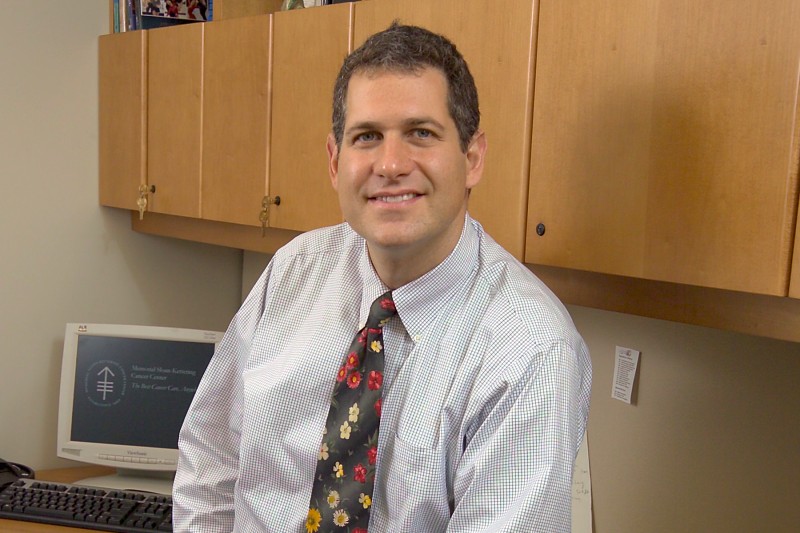
Traditionally, clinicians have relied on information provided by cancer patients during their office visits as the primary means of assessing patients’ symptoms and side effects. However, potentially serious consequences could arise if important symptoms go unreported during those visits because they occur between appointments.
A new study by researchers at Memorial Sloan Kettering Cancer Center (MSKCC) finds that even the sickest cancer patients are willing and able to “self-report” symptoms using the Internet, thus supplying key data in real time to their healthcare providers.
Published in the December 1, 2007, issue of the Journal of Clinical Oncology, the study suggests a new direction in cancer care. According to the authors, supplementing traditional office visit discussions with online patient self-reporting can fill important gaps in clinicians’ knowledge and in doing so may significantly improve patient safety and quality of care. [PubMed Abstract]
“Cancer care has become increasingly complex, causing office visits to become more compressed. This makes it challenging for the clinician to comprehensively assess each patient’s symptoms in that brief window of time,” said the study’s lead author, Ethan Basch, MD, a medical oncologist at MSKCC. “Because cancer therapies can be highly toxic, early detection of symptoms and timely treatment is vital. What is exciting to us about online self-reporting is that patients can alert clinicians to crucial symptoms in real time.”
The research team developed a Web-based system that patients in the study could access using computers in waiting-room kiosks and at home to communicate their symptoms directly to clinicians. Investigators adapted the National Cancer Institute’s standard terminology for tracking patient toxicities in clinical trials and translated it into patient-friendly language. The new terms were uploaded to a secure Web site called Symptom Tracking and Reporting (STAR). Participants used the system to report their cancer- and chemotherapy-related side effects, including pain, fatigue, constipation, diarrhea, nausea, vomiting, shortness of breath, and decreased mobility, as well as their overall quality of life.
From June 2005 through March 2006, 107 lung cancer patients receiving outpatient chemotherapy at MSKCC enrolled in the study. Patients were followed for up to 16 months and 40 visits. Most enrollees were between the ages of 50 and 69, although 28 percent were older than 70. Patients were more likely to use the system if they had prior computer experience; however, age, gender, and cancer stage had no effect on log-in rates.
Researchers found that 100 percent of patients used the waiting room kiosks at some or all of their office visits. An average of 78 percent of participants logged in to the system at any given office visit.
According to the findings, patients were satisfied with the system. Most respondents (98 percent) found STAR easy to use, 90 percent said it was useful, and 77 percent expressed that it improved the quality of their discussions with clinicians.
“Our study suggests that the broader use of patient self-reporting in oncology would be beneficial,” said study co-author Mark G. Kris, MD, Chief of the Thoracic Oncology Service at MSKCC. “STAR makes it easier for patients to provide information to their doctors about their symptoms and side effects. The fact that this information can be collected anywhere and immediately stored and shared hastens and expands our research efforts as well.”
Optional home access to STAR was also offered to study participants. Home users accessed STAR more frequently than clinic-only users, with an average of 23 online sessions versus nine, respectively. Although 76 percent of patients had home computers, only 15 percent reported from home, possibly due to a lack of regular reminders, and to the perception among participants that self-reported information was not being explicitly addressed by clinicians.
Patients were informed that no clinician would regularly monitor STAR reports between visits, and therefore should contact staff directly if severe of disabling symptoms occurred at home. Nonetheless, an automated “alert” system was integrated so that anytime a patient entered a symptom above a certain level of severity, an on-screen message appeared encouraging the patient to contact a clinician, and an email warning was automatically sent to a designated nurse.
Although the study focused on the patient experience, its results suggest that self-reported data is a potentially valuable resource for clinicians as well. At each follow-up office visit, symptom reports were printed for clinical nurses. It was left to the discretion of patients and clinicians whether and how to incorporate STAR reports into their discussions.
“All of the nurses who participated in the study understood the reports and felt this information was highly useful for clinical decisions, documentation, and discussions,” said Ann Culkin, RN, a nurse on the Thoracic Oncology Service at MSKCC and a co-author of the study.
The nurses all noted that they had altered management based on patient-reported information and alerts from STAR, including recommending medication and lifestyle changes and arranging for additional physician consultations.
The authors concluded that online self-reporting is a feasible long-term strategy for monitoring toxicities during chemotherapy, even among very ill patients. However, explicit reminders to log in and clinician feedback on self-reported information are important to maintain patients’ continued interest and participation between visits.
“These findings lay the groundwork for future research to assess whether patient self-reporting improves the efficiency and comprehensiveness of toxicity monitoring in clinical trials, and whether this approach can improve the quality of routine cancer care by expediting detection of severe or disabling toxicities,” said Dr. Basch. These questions are currently being explored by Dr. Basch and his colleagues in a large randomized study at MSKCC and an NCI-sponsored multicenter trial, with results expected in 2009.
Funding support for the study was provided in part by the Steps for Breath Fund for Lung Cancer Research and The Society of Memorial Sloan Kettering Cancer Center.